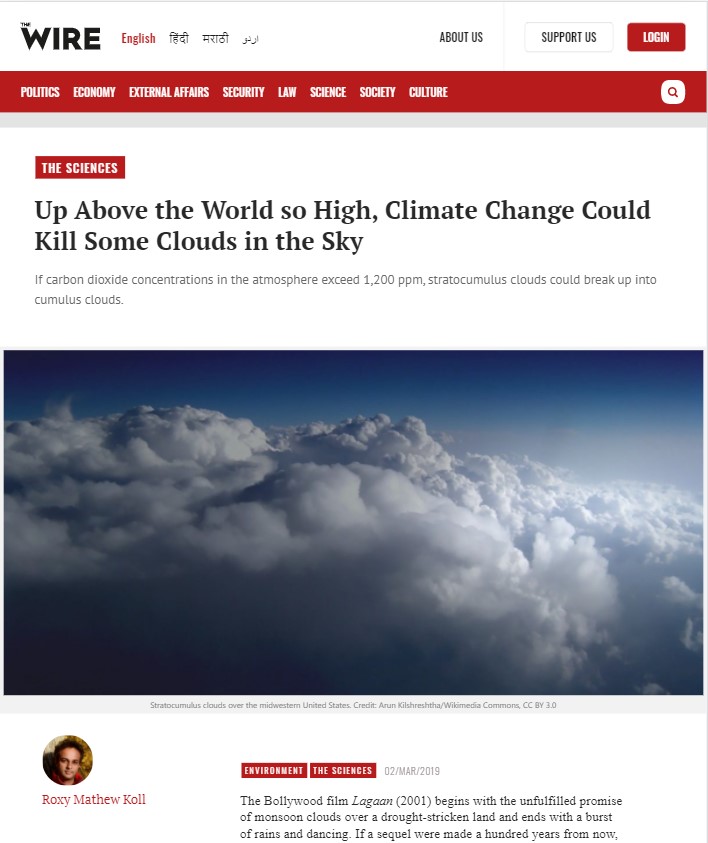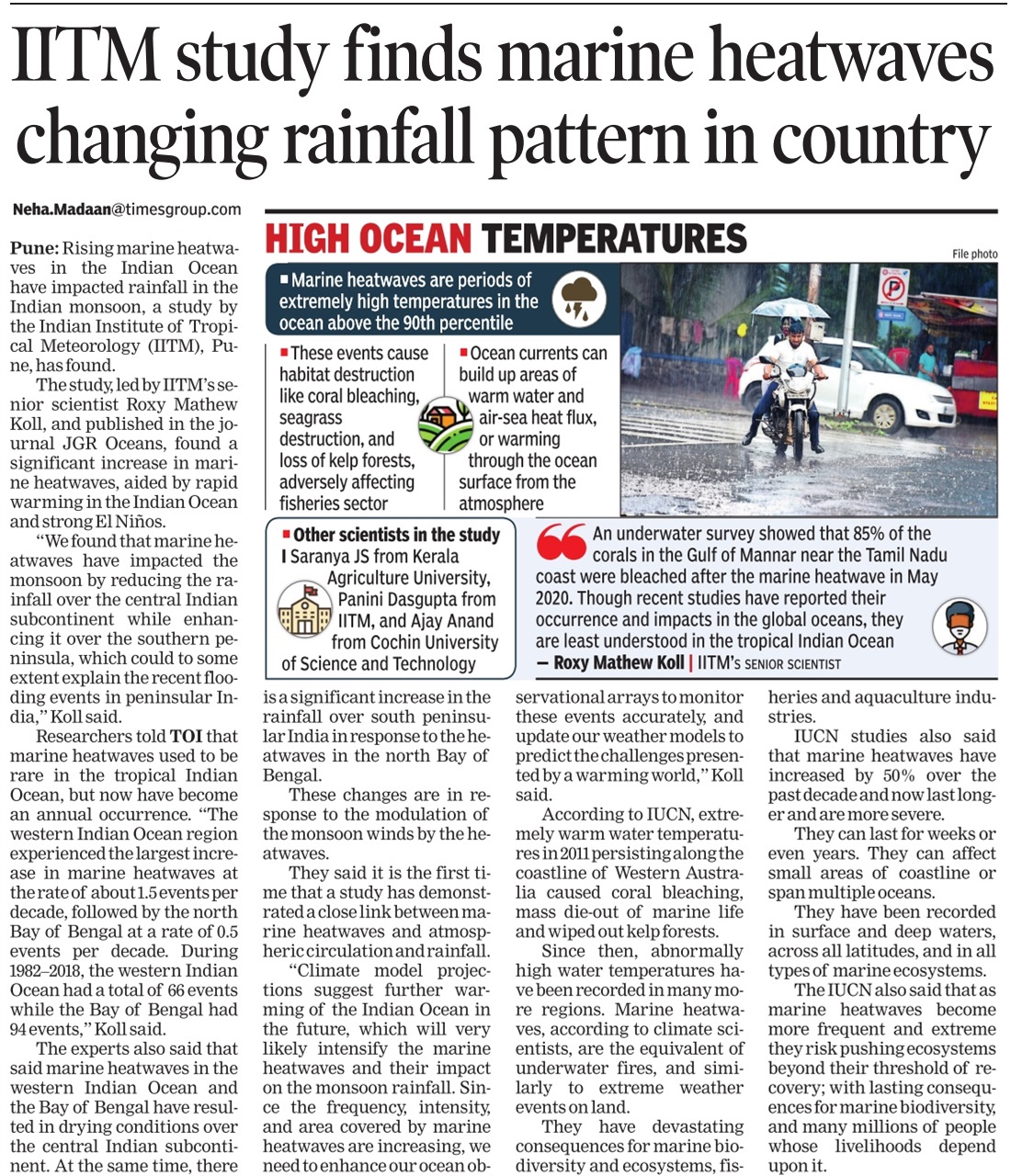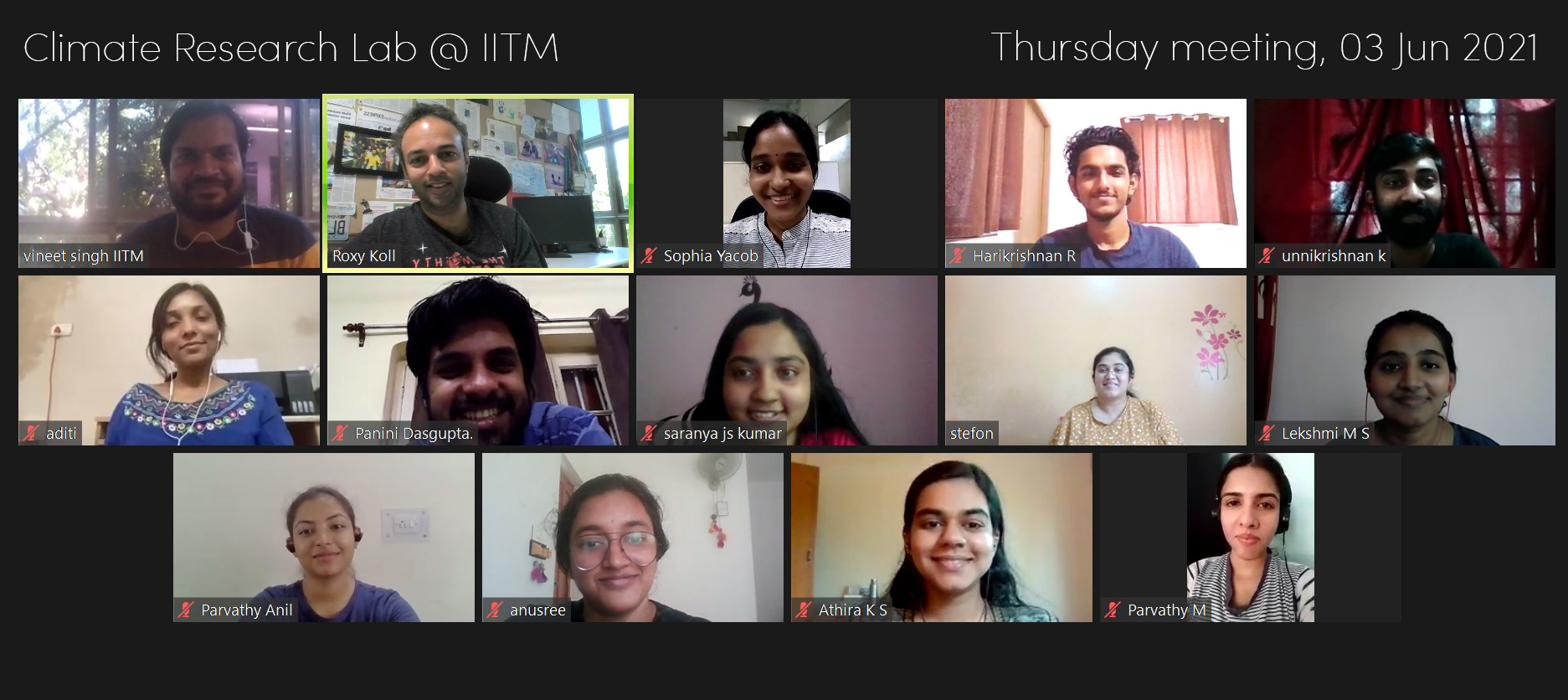Cloud Changes
 Cloud Apocalypse with Climate Change?
Cloud Apocalypse with Climate Change?
If carbon dioxide concentrations in the atmosphere exceed 1,200 ppm, stratocumulus clouds could break up into cumulus clouds.
The Bollywood movie Lagaan starts with an unfulfilled promise of monsoon clouds on a drought-ridden land—and ends with a burst of cloud rains and dance of joy. Lagaan 2, if made hundred years from now, may have fewer clouds and possibly more droughts. Well, that is what a new research on the impact of global warming on clouds suggests.
Clouds
The word cloud stems from Old English clūd, which originally meant rock. The Old English speakers named them so because the thick grey clouds over England looked like thick, heavy, dark grey masses of rock. But not all clouds are the same. While some look like masses of rock, there are other clouds which look like white puffy cotton balls or as thin wispy feathers. Try cloud watching with kids—you might even spot an elephant in the sky!
The magnanimity of clouds become apparent when you realize that more than 70 percent of the Earth’s surface is blanketed by clouds at any given time. They are like a thin layer of floating ocean, with enough water to cover the entire surface of Earth with about one inch of rain. Essentially, clouds are bundles of tiny water droplets and ice particles suspended in the sky. Even a modest sized cloud may contain about 600 tons of water— equivalent to the mass of a Boeing 747.
Clouds generally form when warm moist air moves up, slowly cools down, and eventually reaches an altitude where it is saturated with moisture—beyond which water starts condensing out of the air forming clouds. The level at which the clouds form, and the atmospheric conditions determine whether you get a puffy cotton cloud (cumulus) or a feather-type cloud (cirrus). Depending on the type and size, clouds absorb, transmit and reflect incoming solar radiation. Hence, they play a major role in Earth’s energy balance and essentially the amount of heat we feel.
Stratocumulus clouds
Stratocumulus (Latin stratus means layer and cumulus means heap) generally appear as a layer of thin round clouds in the upper few hundred meters of the planetary boundary layer (generally 1.5–2.0 km in the tropics) and are occasionally accompanied by weak rains. More of Earth’s surface is covered by stratocumulus clouds than by any other cloud type and that makes them extremely important for Earth’s energy balance. They cover about one-fifth of Earth’s surface area, with about 23% of the ocean surface and 12% of the land surface. Over midlatitude oceans, stratocumulus coverage can exceed 50%.
Stratocumulus clouds strongly reflect (30-60%) incoming solar radiation and are effectively transparent to the outgoing longwave radiation from the Earth’s surface. That is, they are relatively better at keeping the Earth cool than most of the other type of clouds.
Global warming and the cloud apocalypse
Their sensitivity to solar radiation also means that even small changes in the thickness and coverage of stratocumulus clouds can produce large changes in the amount of heat gained by Earth. This is exactly what has become a concern now. A recent research experiment by Tapio Schneider and team from the California Institute of Technology (Caltech) shows that if we keep burning fossil fuels at an accelerated rate, we could trigger a cloud apocalypse.
Though clouds are basically made of water droplets and ice particles, their microphysical properties and interactions are complex in nature, making it difficult for scientists to study. It is also challenging for scientists to incorporate them in climate models. This is particularly because key processes in cloud layers occur at scales of a few meters while the current state-of-the-art climate models can resolve atmospheric processes at the scale of a few kilometers only—which makes them difficult to simulate. Tapio and his colleagues say that this incapacity of models add large uncertainties to the future climate projections.
In order to incorporate the role of clouds and resolve the climate projection problem, they employed high performance computing with finer simulation of clouds. They started their climate model run with the current atmospheric carbon dioxide (CO2) concentration levels of 400 ppm, which produced stratocumulus clouds like those we see today. Then they gradually increased the CO2 in the model to see the response to rising emissions. At 800 ppm, double that of current levels, the tropical ocean temperatures increased by 3.6°C and the water vapor in the air increases. The amount of liquid water in the clouds decrease slightly though the cloud cover remains the same. However, when the CO2 level triples at 1200 ppm, the clouds start behaving strange—the stratocumulus clouds break up into scattered, smaller cumulus clouds. Clouds form when the moisture condenses into ice crystals. Hence, as Earth warms, the air is too hot for the ice crystals to form in the lower atmosphere, which results in the breakup of stratocumulus clouds.
This is a huge transition in terms of energy balance because stratocumulus clouds can reduce the absorbed solar energy by about 110 W/m2 in comparison to a 10 W/m2 reduction by scattered cumulus clouds. Besides, most fair-weather cumulus clouds dissipate rather quickly, in comparison to the stratocumulus clouds. The simulated impact of all these cloud changes are large. With fewer stratocumulus clouds reflecting the sunlight, the ocean temperatures rapidly increase by 8°C in the tropics and 10°C in the subtropics. Such a spike in temperatures will render most of the tropics inhabitable for warm-blooded animals.
Climate models are not perfect and there are caveats in Tapio’s analysis. While they simulate patches of cloud at a high-resolution, they simplify rest of the ocean-atmosphere-land system. This means that the model may miss some of the largescale climate dynamics and feedback which may be important in deciding the state of future climate. At present we do not know how this might work out, but it is certain that clouds are going to change in the future under increased human emissions.
How likely is it to happen?
The research shows that the stratocumulus cataclysm may happen if the CO2 concentrations go beyond 1200 ppm. Recently, global CO2 levels crossed 410 ppm, at a 45% increase since the Industrial Revolution (280 ppm). At the current rate of CO2 increase, which is about 2-3 ppm per year, it will take about 300 years or more to reach this CO2 level. The authors of the study however say that this is a possible scenario within a century. This is because global emissions are still shooting up at the business-as-usual scenario—but also because CO2 increase is not linear. Analysis shows that in the absence of sustained efforts to curb our emissions, CO2 concentrations may skyrocket to around 2,000 ppm by the year 2250.
As Raghu Murtugudde, Professor at the University of Maryland puts it, nations are promising change while still holding tightly to bad habits. The wishful expectation is that countries will eventually work together, both globally and locally, to curb emissions. By reducing emissions along with more investment in science and technology—which can provide energy efficient ways to live—we can hope that CO2 levels never soar that high.
Now, one century is not that far. With an average lifespan of 80 years, our grandchildren and their children could wake up to a world with fewer clouds. But the vanishing act of clouds may not be the biggest problem if CO2 levels are to reach such high levels in the future. With sea level rise, warmer oceans, deteriorating marine-land ecosystems and heat waves running parallelly, vanishing clouds will be an addition to our existing climate change scenario.
Ref:
- Schneider, T., Kaul, C. M., & Pressel, K. G. (2019). Possible climate transitions from breakup of stratocumulus decks under greenhouse warming. Nature Geoscience, 12(3), 163.
- Foster, G. L., Royer, D. L., & Lunt, D. J. (2017). Future climate forcing potentially without precedent in the last 420 million years. Nature Communications, 8, 14845.
Originally published in The Wire [link]




